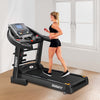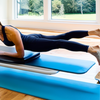
Push-ups are one of the most popular exercises among people who want to improve their fitness.
Push-ups can be done anywhere and anytime, but they require a bit more instruction than other common exercises like squats or lunges.
This blog post will teach you how to do push-ups properly, variations on push-ups, and mistakes that many beginners make when doing push-ups.
We'll also answer some frequently asked questions about this exercise!
## What are Push-Ups and how do they work?
The movement of push-ups targets your pectoral, or chest muscles.
If you're not using proper form when doing a push-up, you might be working other areas of the body including the triceps and front deltoids (shoulders).
Push-ups can also improve strength in your back & abdominal muscles!

## How to Do Push-Ups?
The push-up is performed by raising and lowering your entire body using only your arms. They are one of the most versatile exercises you can do, as they target multiple muscle groups simultaneously.
Here's how to perform a proper push-up:
Step 1 - Start with your hands shoulder-width apart on the floor directly beneath your chest (or slightly wider or narrower) and your feet together. Engage your core muscles to keep yourself from sagging in the middle (imagine a string tied around your waist pulling you toward the ceiling). Keep this alignment throughout the exercise; don't let either your hips sag down or tilt-up onto your toes.
Step 2 - Bend at both elbows, lowering yourself toward the ground. You should move in a straight line until your chest is about an inch from touching the floor, then push yourself back up to starting position.
Step 3 - Exhale as you push away from the floor and inhale when returning to the starting position. Repeat for desired reps or duration of time (if doing cardio).
Most people make the mistake of lifting their hips too high in the air when doing a push-up. This causes you to engage your hip flexors rather than your chest, shoulders, and triceps muscles which should be working during this exercise.
If at any point throughout this movement you begin to shake or feel unstable, stop what you're doing and rest before you try again.
When you feel comfortable with a basic push-up, there are several variations to keep this exercise fresh and challenging:
Clap Push Ups – Jump your hands from the floor directly into a clapping position as fast as possible while keeping good form. If clapping is too difficult or advanced for you at first, just raise your hands off the floor and clap between your hands in mid-air.
Clapping pushups are a great plyometric exercise to work on explosive power, speed & strength when done correctly.
Wall Push-Ups – Stand with your back against a wall and perform standard push-ups from this position until you're strong enough to move away from the wall. This exercise will work your chest and core much harder than the standard push-up as you won't be able to use any momentum from swinging your body back and forth.
Diamond Push-Ups – Place both hands together so that your index fingers and thumbs form a diamond shape (like you're telling someone "it's all good"). Keep this diamond shape while you perform the push-up. This will work your triceps much harder than a regular push-up as these muscles are used to make this diamond shape with your hands.
Diamonds can be performed from either a standing position or against a wall like standard push-ups, but try to keep it challenging!
Bosu Ball Push-Ups – place one hand on a BOSU ball while doing push-ups to increase instability. This will work your stabilizer muscles much harder throughout the movement, increasing muscle tone in that area of your body.
Push-Up with Twist – start out by performing standard pushups but after each rep twist so that you're facing the floor instead of the ceiling at your halfway point. This will work your obliques much harder than a regular push-up, especially if you're doing high repetitions or adding resistance with weights.
Handstand Push-Ups – perform standard pushups while in a handstand position (or resting on your hands against a wall) to increase stability and strength throughout the movement. This exercise will work your core and shoulders much harder than a basic push-up as it increases resistance by taking away the support of your feet on the ground.
If you're just beginning to try these advanced variations, start with lower reps or sets until you feel comfortable enough to increase intensity.

## The Benefits of Push-Ups
There are many benefits associated with push-ups including:
~ strengthening rotator cuffs and shoulder muscles (important for preventing injuries)
~ building & maintaining lean muscle mass in the chest, shoulders, and triceps which can help with weight loss and toning these areas of your body. If you're looking to bulk up or increase strength, push-ups are a great addition to your workout routine.
~ improved coordination and stability throughout the core, back & shoulders which helps with posture in everyday life.
~ improved cardiovascular health due to the increased heart rate associated with push-ups.
The benefits of push-ups are endless! Try adding a few sets into your workout routine today and see for yourself just how beneficial these exercises can be.
And remember, good form is always key—so don't get discouraged if you're struggling at first.
Everyone has to start somewhere, and push-ups are a great way to challenge yourself physically while becoming stronger mentally!
## Tips for doing better at Push-Ups
When performing push-ups try the following tips for better form & results:
~ Keep your back straight so that you're looking up at the ceiling, not at your feet.
~ Keep a tight core by contracting your abdominals throughout the movement and drawing in on your abs as you push yourself up off of the ground to complete each repetition.
~ Keep elbows tucked close to sides while lowering down into position with palms flat against the floor—and spread out hands so that pinky fingers are touching.
~ Keep neck in line with the spine by looking up at the ceiling.
These are just a few tips for performing push-ups properly but they're great to keep in mind as you begin your workout routine and try out some of these more advanced variations! .

## Common mistakes people make when doing the exercise
There are a few mistakes people commonly make when doing push-ups that can cause injury or keep you from getting the most out of this exercise:
~ not keeping core tight and back straight, causing strain on the lower back.
~ arching your neck as you look up at ceiling during pushup—this causes stress to the spine and neck and can lead to injury.
~ not keeping elbows tucked close to sides as you move down into position with palms flat against the floor—this causes strain on wrist bones & joints which can cause discomfort or pain in the future if done repetitively over time.
~ avoid letting your hips sag and drawing them toward the floor as you do each repetition. This can cause lower back pain due to over-extension of the spine—which is not good for your core or overall health!
~ also be sure that shoulders don't shrug up or draw toward the ears during pushups. This can cause neck and shoulder strain which is not good for your muscles and joints!
And remember that push-ups are a great exercise for beginners but also beneficial for more advanced trainers as well.
If you're only beginning to try your hand at push-ups, start out with lower reps or sets until you feel comfortable enough to increase the intensity and work on mastering proper form.
It's also important that if you have any injuries or medical conditions such as bad wrists/shoulders, a weak core, shoulder pain, etc. check with your doctor before beginning push-up training so that you can ensure the exercise is right for you and will not cause injury or pain to areas of your body where limitations exist.
## Commonly Asked Questions
Do push-ups work your arms, too?
Yes! Push-ups are a compound exercise that also works many of the muscles in your upper body. It is important to be aware of proper form and technique when doing push-ups because it can help you avoid injury if done improperly. Using a poor form or going too fast will not allow you to get the most out of this exercise. The most common mistakes that beginners make when doing push-ups is going too low and slouching their back or neck, which can cause injuries over time if done often.
Is it better to do normal push-ups or incline push-ups?
Incline Push-Ups are one of several types of push up exercises. Incline Push-Ups target the upper chest muscles, which is a good thing to do if your primary goal is to build muscle in this area or work on training for rock climbing or diving.
How many push-ups should I do in a day?
The number of push-ups you should do each day is determined by your current level of fitness as well as other factors like age, sex, and weight.
As always, it's important to check with your doctor or physical trainer before beginning this exercise if you have any injuries or medical conditions.
Do I have to go all the way down when doing a push-up?
No! One of the most common mistakes that beginners do when doing push-ups is going too low. It's important to keep your chest just a few inches from the floor so you can maintain proper form and avoid injury.
How long should I rest between sets?
This will depend on how advanced you are in your fitness routine. If you are just starting out, it's important to give your muscles time to recover and replenish their energy stores (known as ATP) between sets so that they can work harder in the next set.
Is it better to do push-ups on my knuckles or fists?
When doing a push-up exercise using your hands, it's important to always use the knuckles on your dominant hand. It is common for beginners to have their palms flat so they can balance themselves, but this is incorrect form and you will not be able to get as much benefit from push-ups if done incorrectly.
Why do my hands hurt when I do push-ups?
Even if you do push-ups on the knuckles of your dominant hand, it's common to feel some discomfort or even pain in your hands. If this is happening and causing issues for you, try using a foam mat under your palms as an added cushioning measure.
What are stationary push-ups?
Stationary Push-Ups are one of several push-up variations. This exercise is a bit more advanced and they are done using the same form as regular push-ups, but you will not be moving your body at all during this exercise.
Can I use weights when doing push-ups?
It's important to have the proper equipment if you want to do Push Up Exercises. Using free weights or resistance bands while doing push-ups can be dangerous because it takes away from the stability of your body.
Is there a way to make regular push-ups easier?
Yes! There are several ways that you can modify how hard a push-up exercise will feel for you without changing which muscles work during this exercise. For example, you can elevate your feet on a bench or platform to make the exercise easier.
Does it matter how far apart my hands are when doing push-ups?
When you do push-ups with proper form and technique, most people find that having their hands closer together is optimal for them. You may want to experiment with different hand placements to see which one feels best for you.
Can I do push-ups on my knees?
No! It's important that when doing a push-up exercise, your back remains in good alignment and doesn't sag or arch during the movement. If done incorrectly, this can cause injuries over time if repeated often so it's important to work on your form from the beginning.
What are push-up variations?
Push Up Exercises can be modified in several ways depending on which muscles you want to target and how much resistance or weight you would like to add into the exercise. For example, a close grip push-up targets only one side of your chest while a wide grip push-up targets the other side.
What are clap push-ups?
Clapping during this exercise is not recommended because it creates too much momentum and can cause injury to your back, shoulders, or wrists if done incorrectly. Instead of clapping, you should perform explosive variations where you move quickly from one position to another.
What are plyometric push-ups?
Plyometrics, also known as jump training, is a form of exercise that can be used when you want to add resistance or weight to your push-up workout. This type of explosive movement requires fast-twitch muscles which will target specific areas in the upper body.
Can I do regular push-ups if I have a shoulder injury?
There is no specific push-up exercise for people who have an upper-body injury. If you are looking to strengthen your shoulders, it's important that you find the right exercises and equipment so that you can avoid any injuries or pain when exercising.
How many types of push-ups are there?
Push-Up exercises are broken down into three main categories: standard, close grip, and wide grip. In addition to these primary forms of push-ups, there are several variations that you can add in order to make an exercise more challenging or target a specific area of your body.
How many types of push-ups exist?
There is no exact number of push-up variations available since the exercise can be modified in several ways. For example, you may add weight or resistance into a regular push-up to make it more challenging and target specific muscles groups that traditional exercises do not work on.
What are reverse push-ups?
Reverse Push-Ups also known as Inverted Rows are one of several exercises that you can do to work your back muscles. By adjusting the placement of your feet, this exercise targets different areas in the upper body so it's important to see which variation works best for you and feels most comfortable before adding weight or resistance.
## Summary
The push-up is one of the most versatile bodyweight exercises.
You can do it as part of a circuit training workout, during your strength routine, or round out your day with some simple home exercise.
If you are just starting out, try an easier variation like the incline chest press or decline push-ups before moving on to full standing push-ups.
Now that you can do push-ups with ease, it's time to experiment with different variations.
Try doing a triceps press, frog push-up, or knee push-up for some variation in your workout routine!
You'll be glad you did when the next day rolls around and soreness kicks in!
So which variations have you tried? Let us know in the comments section.














